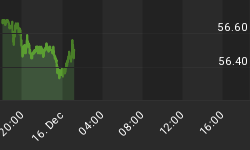Recently, I pointed out (in "Kissing Assets Goodbye" from November 1st) that disasters lower a country's net worth. Therefore, even though they will tend to increase flows-based measures of economic activity, such as today's New York ISM where the "6-month outlook" subindex jumped from 57.7 to 75.3, it's not good news. I lamented that, although the numbers are not wrong per se, they are misleading. And they are misleading because there is no economic "asset" and "liability" account for the nation.
I recently saw a paper which attempts to create just such a "balance sheet" for the nation, albeit with a very long lag. It is a project to define "the integrated macroeconomic accounts" of the United States, and it is jointly produced by the Bureau of Economic Analysis and the Fed. You can find a discussion of the effort here, and if you search on "disaster losses" you can find evidence on household, government, and business balance sheets of the impact of Hurricane Ivan in 2004 (about $28bln) and Hurricanes Katrina and Rita in 2005 (about $110bln).
Read through the paper and you can see this is an ongoing project with many current shortcomings, but it's progress. However, it's doubtful it will ever be used by economists in anything approximating real time, which means my objection - that economists ignore the fact that a disaster is a net negative even though it is positive in an activity sense - stands. Still, with as much as I bash economists, it's only fair that sometimes I point out when they're trying to do things the right way.
Now, one interesting part of the paper is on page 6, where the economists detail the sources of net lending and borrowing in the capital and financial accounts, broken down by sector. For those who think that deficits don't matter, this is something to chew on. According to the table, in 2007 we were all borrowing: households, businesses, state and local governments, and the federal government. This was financed by our overseas trading partners. Everything changed in 2008, when the government borrowing "crowded out" private borrowing. The table below is a summary of two columns from the paper, and compares net lending or borrowing by sector for 2007 and 2011.
| (billions) | 2007 | 2011 |
| Households & nonprofits | -126 | 476 |
| Nonfinancial noncorporate businesses | -74 | -6 |
| Nonfinancial corporate businesses | -94 | 422 |
| Financial business | -3 | 125 |
| Federal government | -315 | -1357 |
| State & local governments | -93 | -113 |
| Rest of the world provides the difference | 716 | 484 |
+ indicates net lending
The last number in the column is essentially the number needed to make the column sum to zero (although not exactly, due to statistical discrepancies...that is, it isn't a "plug" number but rather is measured directly), and it clearly is bounded at some level. The rest of the world will not lend us, especially in the current economy, a bazillion dollars. And when so many other countries are running large deficits, there is great competition for those dollars. So the "rest of the world" line cannot simply rise to any level in order to balance out the column. (When our economy was less open, this line was far less flexible even than it is today).
Consequently, when the "Federal government" deficit rises by a trillion dollars, it essentially forces (in a mathematical and accounting sense that the books must balance) the other sectors to become lenders. Or, put another way, if no one buys the bonds then the federal government can't run that deficit; ergo, the existence of the deficit implies that other sectors have lent.
A more-generous interpretation would be that the other sectors became savers due to the crisis and so, in order to maintain economic growth, the Federal government was forced to borrow. Aside from being a false choice (the government could have chosen to let the economy solve its own problems), that interpretation is less plausible now that we are four years out from the crisis and the deficits still persist.
There are other ways to illustrate this same proposition, such as through the numbers the Fed produces in the Z.1 report, which show that Treasury debt has gone from being 25% of total domestic non-financial sector debt to 40%, in only four years (see chart below, source Federal Reserve Z.1 report).

However, this doesn't illustrate the "crowding out" causality as well as the table above does. The following chart (Source: Fed Z.1 report) shows it better, but it still begs the question a bit because it shows levels and not flows. For my money, I like that table.

All in all, the paper is worth reading - it's only 17 pages, and lots of great charts and numbers to go with that.
















